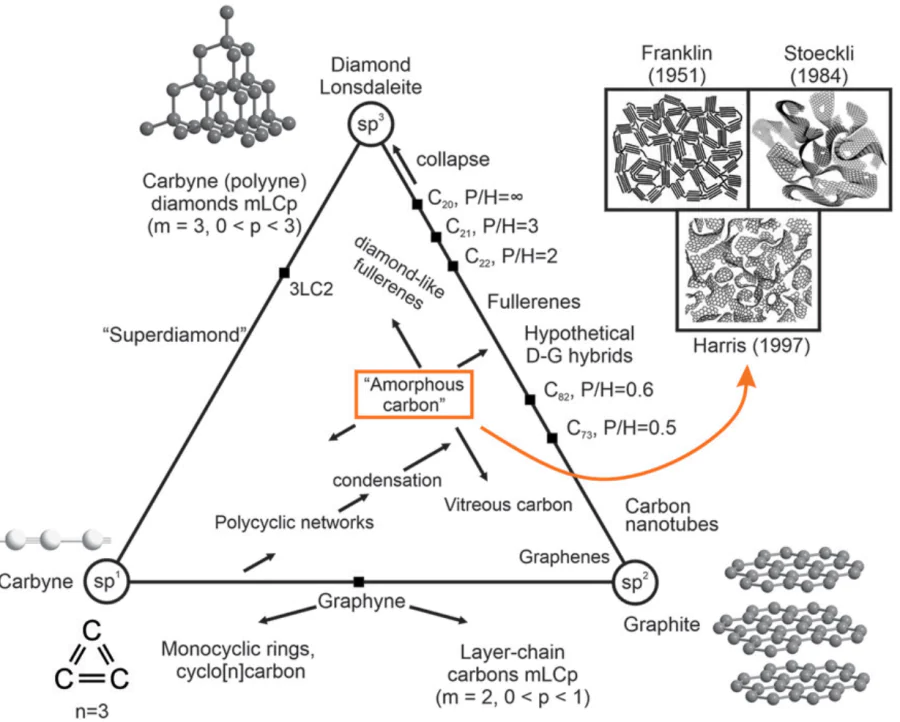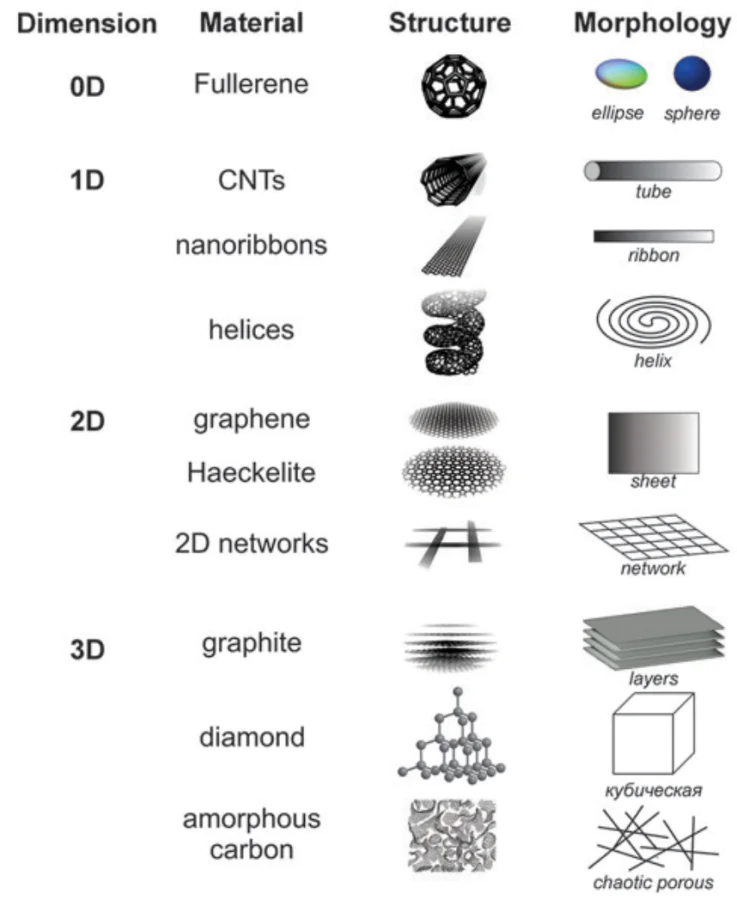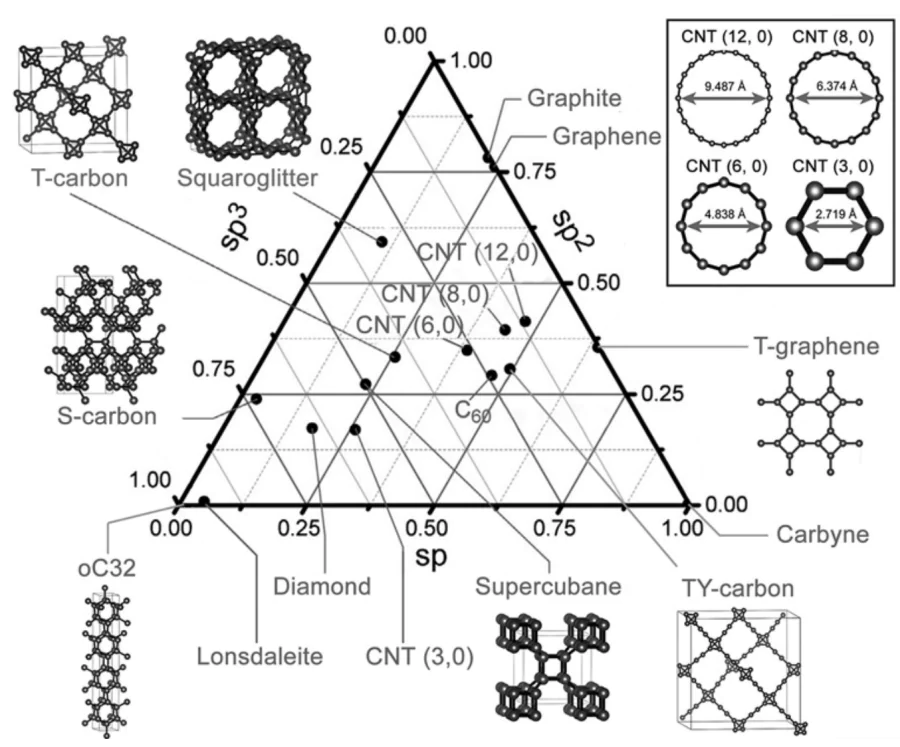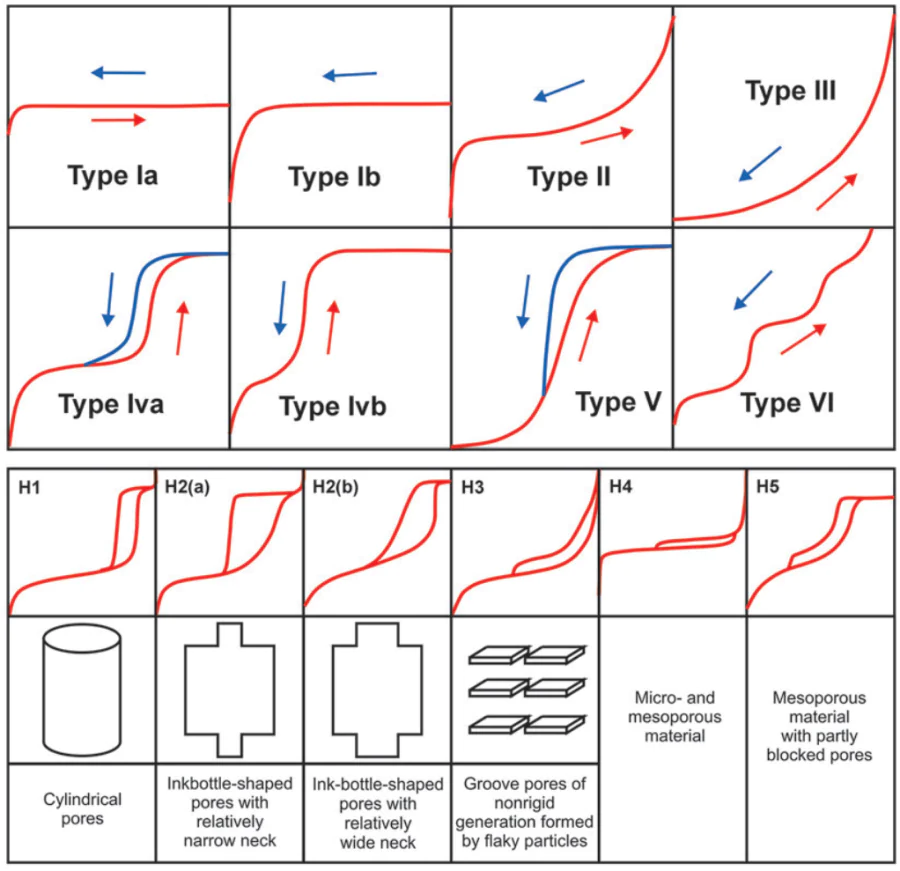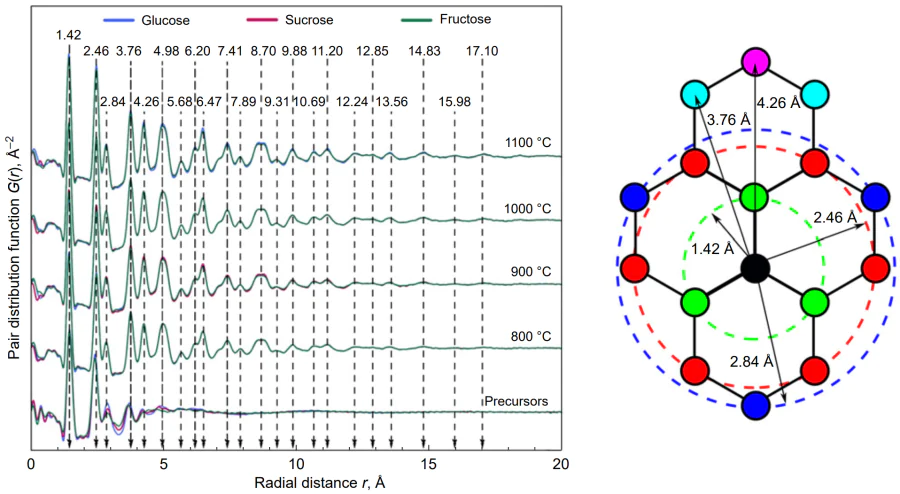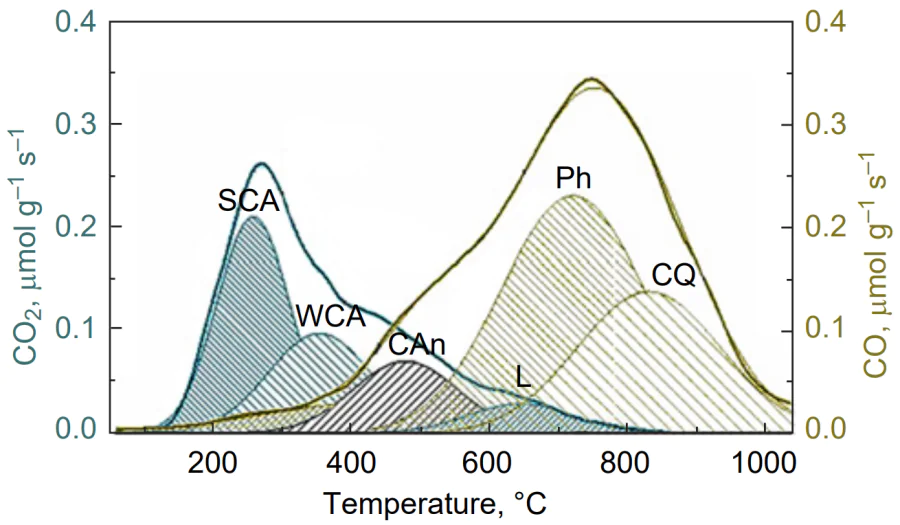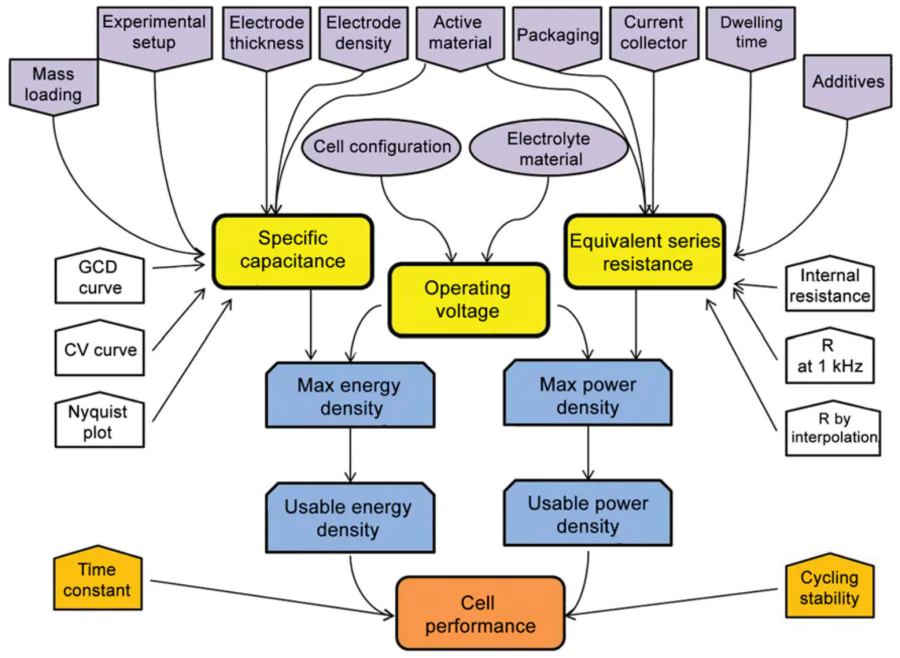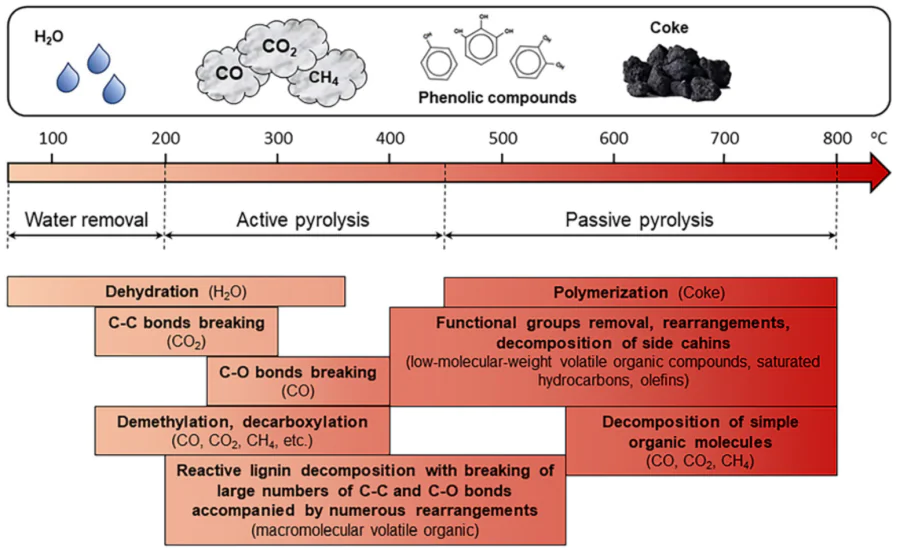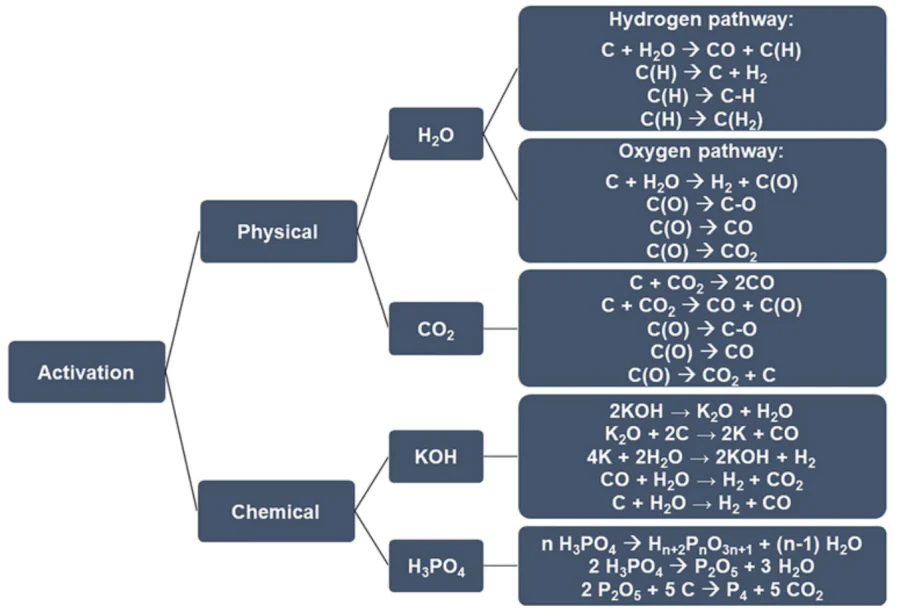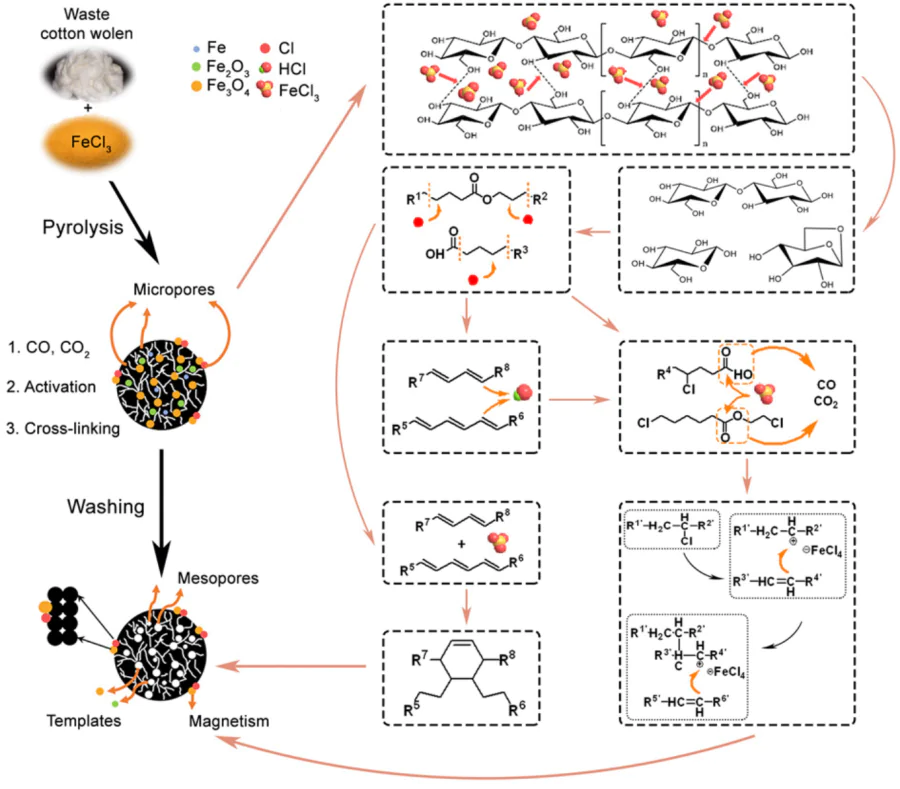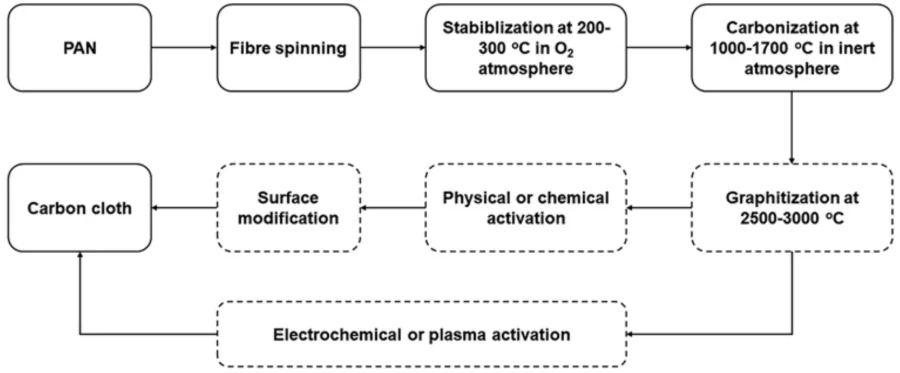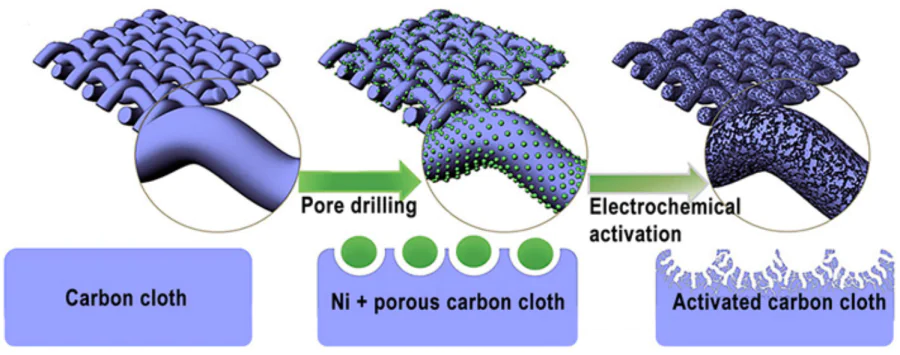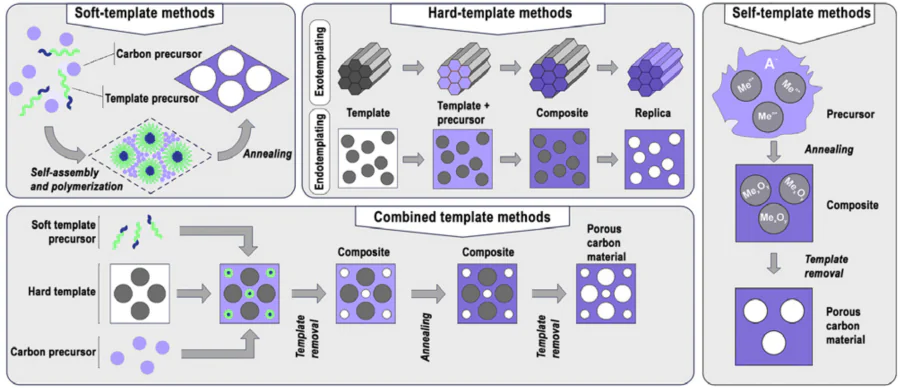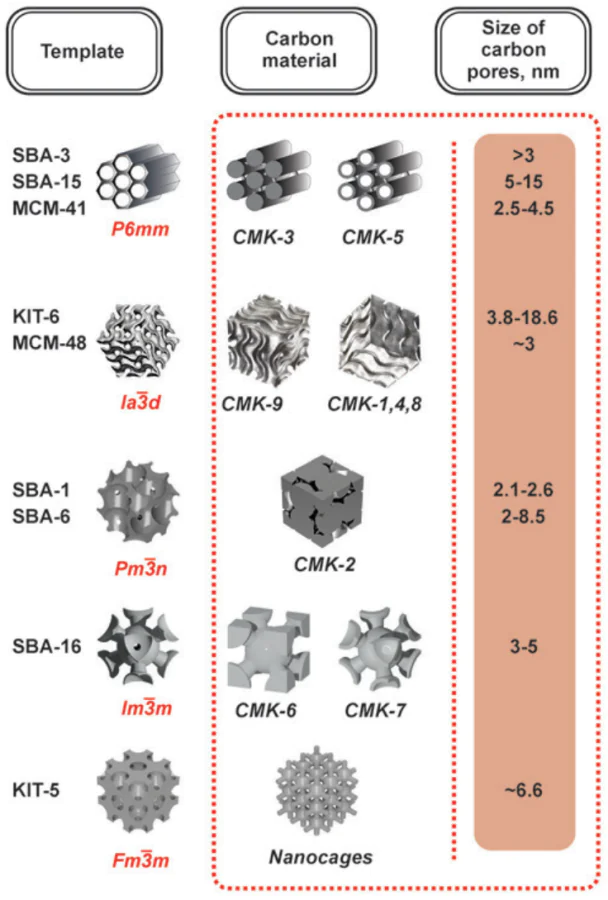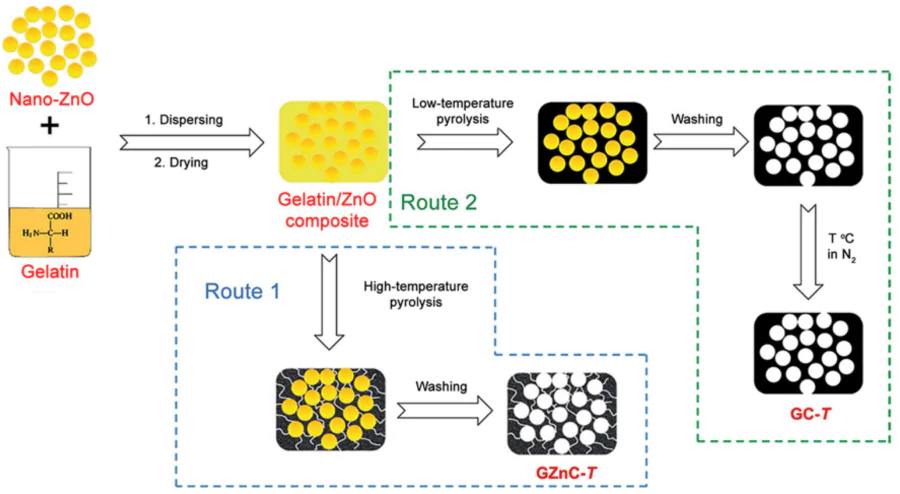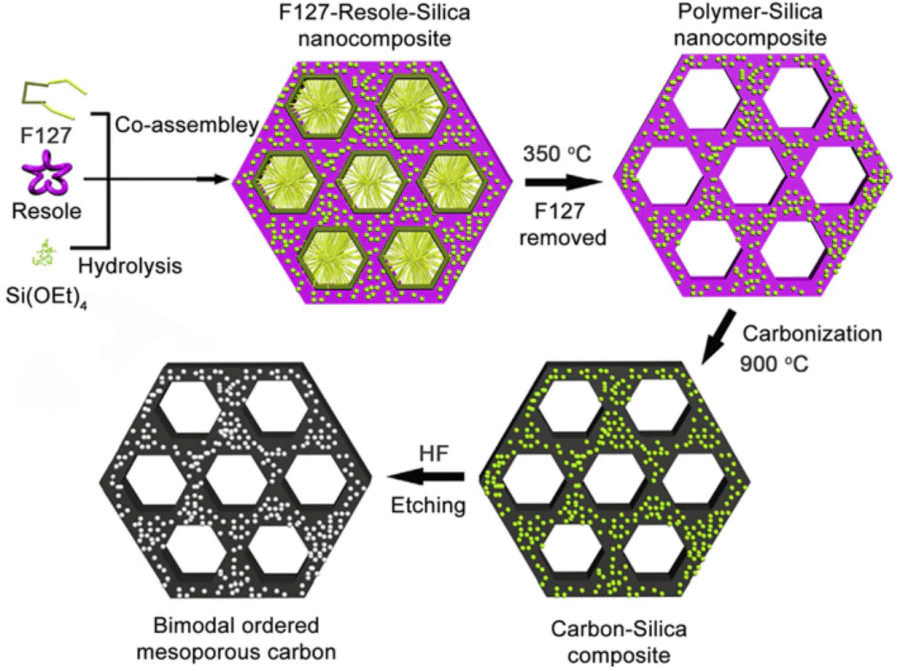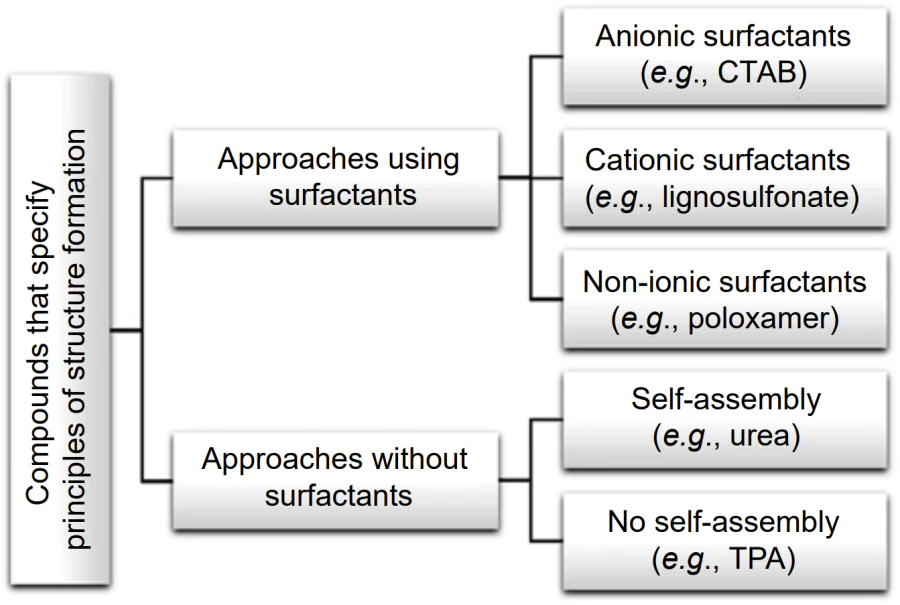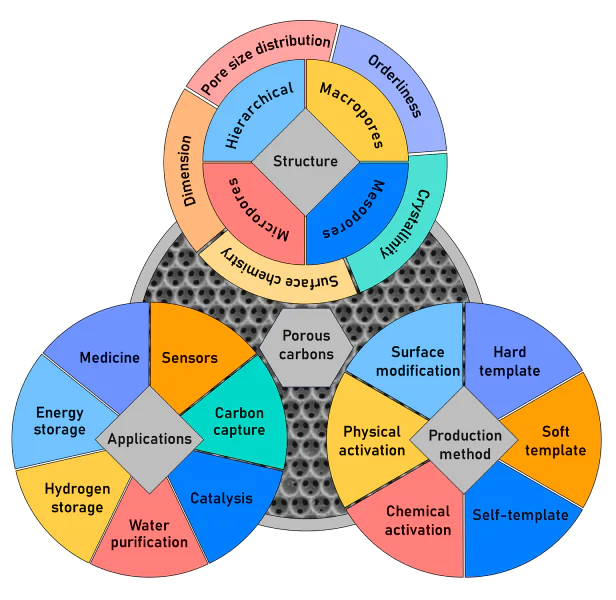Keywords
Abstract
The review presents data on the nomenclature and production methods of the most intensively investigated classes of nanoporous carbon materials, which are increasingly used in science, medicine, and various fields of economy. The traditional activated carbons, which are produced by conventional biomass and fossil hydrocarbon processing methods, are compared with nanoporous carbon materials obtained using modern synthetic methods. Recommendations are given on the use of template synthesis to obtain carbon materials with a controlled nanoporosity. Self-template synthesis, in which environmentally benign and readily available organic salts can be used as precursors, is considered as a promising avenue of research. This approach markedly reduces the cost of template synthesis of nanoporous carbons and allows for the preparation of carbon materials with specific particle morphology from organometallic precursors. Methods for the preparation of functional materials with ordered architectures of micro- and mesopores are considered, including modern functionalization and doping approaches. A part of the review is devoted to advanced applications of nanoporous carbon materials such as water treatment, energy and hydrogen storage, separation of gas mixtures, development of catalysts and sensors, and solution of other significant problems. The conclusion summarizes the experience of application of various methods for the preparation of nanoporous carbon materials, identifies the most problematic issues of the development and practical use of these materials, and presents the authors' view on further development of this area of materials science.
The bibliography includes 353 references.




